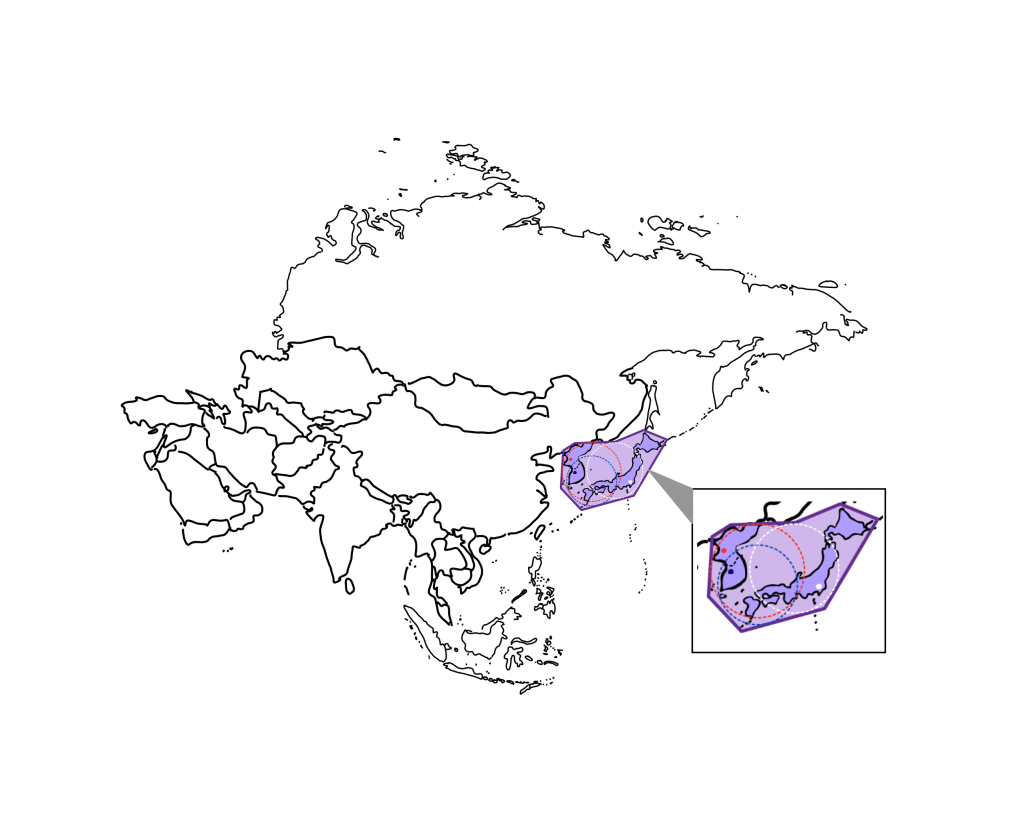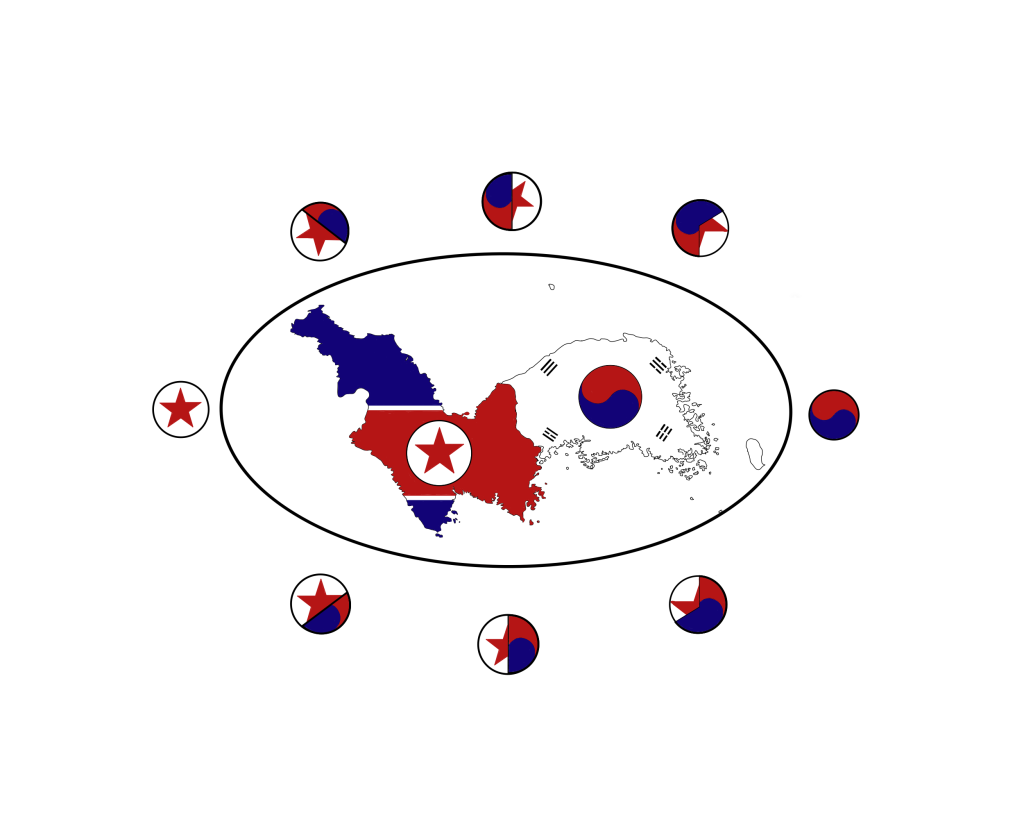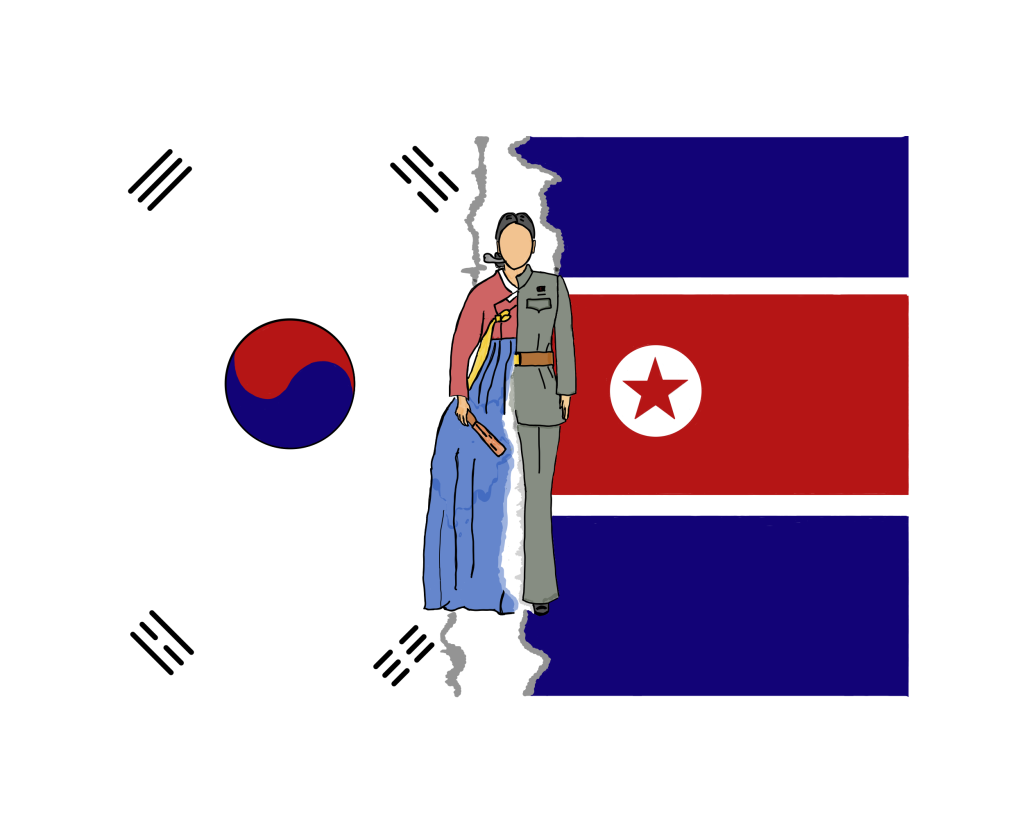Postcard 1: Defining Map of the Zainichi Struggle

The map above portrays the area of the nowhere of the Korean peninsula and the islands of Japan. This is an illustration that was created by myself to portray a map of the continent of Asia and to color in the specific area to emphasize the nowhere. The purple color is a mixture of the different red, blue, and white of the flags of South Korea, North Korea, and Japan to represent the mixture of political and diplomatic activity that define this area and create the Zainichi Koreans into no ones in this nowhere. The jagged and asymmetrical geometric shape showcases the nature of this political area and the jagged dynamics that subject the Zainichi Korean to different forces of various nation-building projects. The illustration contains perforated circular lines inside the purple shaded region to represent the different spheres of influence and how permeable each is in this small area on the continent of Asia.
Postcard Draft 2: Lunar Push and Pull

In this postcard, I chose not to orient the peninsula in its typical north to south orientation to disorient the audience from immediately identifying the shape of the two countries. After some inspection, the audience would understand that the orientation of the peninsula was shifted 90 degrees to the left. This was done in order to showcase more of the push and pull forces rather than pulling up or letting fall. On the note of push and pull, I wanted to represent the forces of South Korea and North Korea through a natural element that people are used to understanding: the moon. The different circles represent the different “phases” that people can go through because of the conflicting forces of the two nation building forces as it circles the peninsula. The pushing and pulling is what creates the conflicting selves and the cyclical nature of the lunar cycle represent the never ending process that they live in.
Postcard Draft 3: The Conflicting Self

This final postcard aims to show the internal struggle and conflict that lives inside the Korean body. It encapsulates how the 38th parallel acts and functions as a rift between the two different political and national identities, and how the Zainichi Koreans are asked and demanded to take part in one persona over the other (Kim 2016). However, this break and fissure boils down to the embodied experiences of having to choose between political alignment, familial expectations, personal beliefs, and desires. This postcard aims to show that the 38th Parallel is not just a physical boundary that exists between two different nation states, but it becomes embedded into the lives of the Koreans who do not reside inside the physical boundaries of North and South Korea.
Sources:
Kim, Jaeeun. 2016. Contested Embrace: Transborder Membership Politics in Twentieth-Century Korea. Stanford, CA: Stanford University Press.
